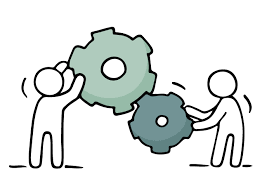15 Proven Strategies to Cultivate High-Performing Teams
In today's dynamic business environment, high-performing teams aren't a luxury; they're essential for sustained success. The collaborative synergy of diverse individuals, leveraging their unique skills and perspectives, unlocks exceptional achievements. However, fostering this collaborative spirit demands strategic planning and ongoing dedication. This guide details fifteen proven strategies for cultivating a thriving team culture, complemented by practical examples for successful implementation.
Creating a high-performing team is a multifaceted process. It transcends simply assembling talented individuals; it involves nurturing a supportive environment where those talents can flourish. This necessitates a holistic approach, encompassing various aspects of team dynamics—from clearly defined roles to a culture of continuous learning and feedback. Let's explore the key components contributing to a team's overall effectiveness.
Laying the Foundation: Roles, Communication, and Culture
1. Crystal-Clear Roles and Responsibilities: Eliminate productivity-stifling ambiguity. Each team member's role and responsibilities must be explicitly defined, ensuring everyone understands their contribution to overarching team objectives. For example, a marketing team should clearly outline roles such as content strategist, social media manager, and SEO specialist, preventing overlaps and promoting individual accountability. A well-defined RACI matrix (Responsible, Accountable, Consulted, Informed) proves invaluable in clarifying roles and responsibilities.
2. Open and Transparent Communication: Open dialogue is the lifeblood of a high-performing team. Members should feel empowered to share ideas, concerns, and challenges without fear of reprisal. Regular team meetings, brainstorming sessions, and readily accessible communication channels are crucial. Daily stand-up meetings for quick updates or weekly project reviews for in-depth discussions significantly enhance communication flow. Consider using collaborative project management tools to centralize communication and efficiently track progress.
3. Fostering a Supportive and Inclusive Team Culture: Mutual respect and support are fundamental to a thriving team. Acknowledge individual contributions and celebrate collective achievements. Peer recognition programs or team-building activities can strengthen camaraderie and mutual support. Cultivating a psychologically safe environment encourages risk-taking and idea-sharing without fear of judgment. This fosters innovation and ensures team members feel valued and respected.
Alignment, Knowledge Sharing, and Embracing Diversity
4. Establishing Shared Goals and Objectives: A shared understanding of team goals is paramount. Set SMART (Specific, Measurable, Achievable, Relevant, Time-bound) objectives, ensuring everyone works towards a unified vision. This shared purpose empowers collaboration and establishes shared responsibility for results. Regularly review and adjust goals to maintain focus and motivation throughout the project lifecycle.
5. Knowledge Sharing and Continuous Growth: Foster a culture of continuous learning and knowledge sharing. Regular knowledge-sharing sessions, mentorship programs, or internal training initiatives empower team members, driving individual and collective growth. An internal wiki or knowledge base serves as a centralized information repository, ensuring easy access and promoting a learning culture. This prevents valuable knowledge from becoming siloed.
6. Valuing Diversity and Inclusion: Diverse perspectives fuel innovation and creative problem-solving. Actively encourage participation from individuals with varied backgrounds, experiences, and skill sets. Incorporate diverse viewpoints into decision-making processes; this inclusive approach results in more robust solutions and a more engaged workforce. Embracing diversity enhances the team's overall capabilities and creates a dynamic, innovative work environment.
Building Trust, Collaboration, and a Culture of Feedback
7. Building Trust and Mutual Respect: Trust and respect are foundational to any successful team. Encourage open and honest communication, active listening, and empathy. A psychologically safe environment enables constructive feedback and efficient conflict resolution, strengthening team cohesion. Regular check-ins and one-on-one meetings significantly contribute to building and maintaining these relationships.
8. Collaborative Project Assignments: Design projects requiring collaboration, encouraging teamwork and problem-solving from the start. This approach fosters stronger relationships and enhances shared learning. Projects could range from developing new marketing campaigns to streamlining internal processes or tackling complex technical challenges demanding cross-functional expertise.
9. Regular and Constructive Feedback: Regular, constructive feedback is essential for individual and team growth. Implement a structured feedback system including peer-to-peer reviews and manager feedback, focusing on both strengths and areas for improvement. Prioritize providing actionable feedback that empowers individuals to improve their performance. This continuous feedback loop is key to continuous improvement and growth.
Optimizing the Work Environment and Leadership
10. Fostering a Positive and Engaging Work Environment: A positive work environment significantly boosts productivity. Provide a comfortable and well-equipped workspace, create opportunities for social interaction, and promote a healthy work-life balance. Recognize and reward achievements, both individually and collectively—small gestures of appreciation significantly enhance team morale and foster positive team spirit.
11. Leveraging Collaborative Tools and Technologies: Utilize collaborative tools to streamline communication and information sharing. Project management software, communication platforms, and cloud-based document storage facilitate seamless collaboration regardless of location. Select tools aligned with the team's specific needs and workflow to maximize efficiency and effectiveness.
12. Promoting Cross-Functional Collaboration: Break down departmental silos by fostering collaboration across various teams. This broadens perspectives and allows for a more holistic approach to problem-solving. Cross-functional projects or joint meetings facilitate this interaction, leading to innovative and effective solutions leveraging diverse organizational expertise.
Leadership, Team Cohesion, and Adaptability
13. Leading by Example: Leaders play a crucial role in shaping team culture. They must exemplify effective teamwork, demonstrating open communication, active listening, and providing constructive feedback. This sets the tone for the entire team, fostering a collaborative and supportive atmosphere. Leaders should actively participate in team activities and demonstrate a clear commitment to the team's success.
14. Investing in Team Building and Bonding: Invest time and resources in team-building activities to strengthen connections and trust. Organize social events, team outings, or participate in shared learning experiences to create a strong sense of community and cohesion. Tailor activities to align with the team's interests and preferences to maximize engagement.
15. Embracing Flexibility and Adaptability: Adapt to diverse working styles and preferences. Offer flexible working arrangements where appropriate, promoting work-life balance and demonstrating a commitment to individual needs. This adaptability fosters a more inclusive and collaborative environment, ultimately leading to a more engaged and productive team. Flexibility allows the team to effectively respond to changing circumstances and maintain optimal performance.
By consistently implementing these strategies, organizations can cultivate high-performing teams capable of achieving remarkable results. Building effective teams is an ongoing process requiring consistent effort and unwavering commitment. However, the rewards—enhanced productivity, groundbreaking innovation, and a significantly more rewarding work experience—are substantial and well worth the investment.





